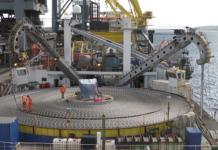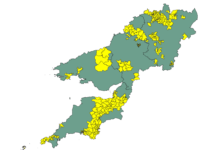A wire-free power monitoring solution from Daxten is allowing Fujitsu’s London data centre to centrally control and manage both environmental sensors and energy parameters while itemising bills for customers.
In Fujitsu’s data centre in London, it is not just the company’s own data that is managed but also that of hosted customers. The requirements for computing capacity and data volume are different from customer to customer, which means, of course, that the underlying energy costs of the services also vary.
To be able to provide every customer with an accurate itemised bill of power consumption, Fujitsu relies on a wire-free monitoring system called Packet Power supplied by Daxten.
This system wirelessly records all power parameters such as volts, amps, watts, frequency, power factor, apparent power and, of course, consumption data
and breaks it down from the room-based distribution
level to rack, PDU and device level.
Environmental tracker
One of the main reasons they opted for the Packet Power solution was that, in addition to monitoring power, it also tracks environmental parameters like temperature, differential pressure and humidity.
Extensive recording of this data makes it possible for consumption, capacity utilisation and environmental conditions to be calculated, analysed and ultimately continuously optimised.
began taking measurements and sharing the data automatically in a wireless network.
The individual modules in the Packet Power system are not physically connected to one another by cables or a bus system, but can be placed anywhere in relation to one another. The power and environmental data collected by the power metering and sensor modules is recorded and transmitted to one or more gateways wirelessly.
The gateways convert the data and transfer it via SNMP or modbus to a dedicated user interface or, if necessary, to an overarching data centre infrastructure management (DCIM) or building management system (BMS) application.
On-demand scalability
“What really won us over was the manufacturer’s idea of integrating the metering module for recording the power data right into the power cable. It simply replaces the cable for our active hardware and the rack PDUs and is ready for operation as a monitoring unit,” according to Levey.
Fujitsu’s London data centre currently has 284 monitoring units and gateways in operation. More modules are continuously being added in collaboration with Daxten; the goal is to retrofit all of the racks with the Packet Power solution to make it the standard.
For Levey and his team, it is important that the retrofit and future enhancements can take place step by step and exactly in line with needs. This reduces pressure on the budget and lowers follow-up costs. The technicians like the fact that installation mainly involves positioning the environmental sensors or replacing the power supply cables for the Packet Power wireless devices.
Dashboard to monitor
An administration tool integrated in the system reduces the workload of system operators: it processes the measurements of the monitoring modules to create actual and trend reports on power usage and environmental parameters.
System operators control consumption and distribution loads as well as temperature, pressure and humidity values in the room and at every rack level via graphical dashboard displays or in table format.
The monitoring solution also functions as a proactive early warning system, for example, in the event of a problematic temperature change in the rack or fluctuating power supply via a PDU strip.
If limits defined ahead of time with the administration tool are even slightly exceeded, the monitoring system reacts immediately and automatically triggers warnings. Countermeasures can then be initiated before heat-related or power-related system disruptions can even occur.
“We don’t just use the solution as a metering and monitoring tool or early warning system, we also use it to identify where power reserves still exist or if power and cooling resources are limited in the individual racks. This way, we know exactly how much active hardware we can install in the cabinets and are able to distribute the loads appropriately – and this creates efficiency,” sums up Levey.
Click here to see if you qualify for a free subscription to the print magazine, or to renew.
Follow us at @mcriticalpower. For regular bulletins, sign up for the free newsletter.




